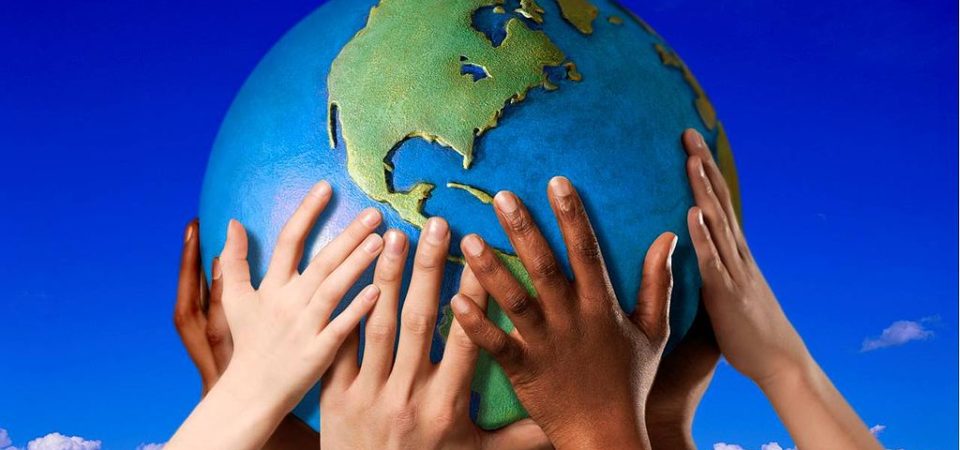“We are in a period of great disequilibrium as we shift rapidly now to a post-industrial society. It is a crisis and also an opportunity. It ultimately depends on human agency. We have to think in longer terms… There are no quick fixes…We need a whole new way of thinking.”–Riane Eisler, The Partnership Way
We all should be terrified by the dark course the global human culture is on. We see it on the news 24/7. A recent example was the devastation of Lahaina, once a Hawaiian paradise, now largely incinerated by climate-driven wildfire. A convergence of factors drove the 80 mph flames that raced through Lahaina. The most extreme was man-made.
We humans have long treated our Earth as an object of exploitation. We are now increasingly victims of our own extreme overreach. We have doubled our human population numbers in just the most recent 50 years to more than 8 billion. In that same time frame, our planet’s wild animal populations have fallen by 70 percent. Every year, we are now taking and consuming the equivalent of 1.75 times our earth’s store of regenerable resources. This is simply not sustainable.
The human course we are on, defined by tribalism, self-interest, and the rapid exhaustion of our Earth’s vital resources, is a sure ticket to cultural collapse, and potentially to extinction or something close to it.
We’re talking about our global-scale failure thus far to adequately recognize and address the deadly existential threats for which we humans are entirely responsible.
Ignorance and indifference are dead-end options. To save our future, those of us here and now must come together behind a cross-cultural common purpose.
We have crafted the outline for a global treaty that takes into account the systemic threats that all humans share–all genders, ethnicities, and nationalities.
Consider the cluster of Earth-scale threats that demand human accountability.
“The evidence is compelling that human exceptionalism is a deeply-flawed construct–a grand cultural illusion–that has led modern techno-industrial societies into a potentially fatal ecological trap.”–William Rees, author of The Human Ecology of Overshoot
Ten Planetary-Scale Existential Threats to Life on Earth
The distinguished Australian science author Julian Cribb, in his book, How to Fix a Broken Planet, has categorized ten existential threats that put the future of life on Earth at great risk:
- The rapid decline of vital natural resources, like water, soil, fish, and forests, driving a global crisis.
- Collapse of ecosystems causing mass extinction of animals and plants.
- Massive human population growth, substantially exceeding the planet’s carrying capacity.
- Global heating, sea level rise, and changes in the Earth’s climate imperiling our food supply and affecting all human activity.
- Chemical emissions poison every human and living creature on Earth.
- Growing threats to humanity’s food security.
- A rising risk of nuclear war.
- New pandemics and untreatable diseases.
- Powerful, uncontrolled new technologies will change and potentially ruin all our lives.
- On top of all that, there’s a flood of lies and misinformation leading to global failure to understand and act on these risks.
Every passing day that we fail to adequately address these potentially catastrophic threats carries all of humanity further down the road to ruin.
“The task is to articulate not just an alternative set of policy proposals but an alternative worldview to rival the one at the heart of the ecological crisis—embedded in interdependence rather than hyper-individualism, reciprocity rather than dominance, and cooperation rather than hierarchy.”–Naomi Klein, author of This Changes Everything – Capitalism vs. the Climate
We Need a Whole Earth Wake-Up Call
We do have some unprecedented things going for us. Just when our need to embrace planetary-scale change is greatest, we have the means to deliver powerful, life-affirming, common-purpose messages to all genders, ethnicities, and nationalities in every corner of our planet at the same time, using the internet and social media.
This unprecedented outreach capability is also being used by the rich and powerful to spread lies and disinformation designed to protect their culturally dominant tribalism and self-interest.
Thus, the urgent task at hand is not just about building an audience for a transformative cultural message, it also requires assertive resistance to the mind-numbing din of counter-messaging that swamps the media.
Our Earth desperately needs a culturally transformative idea that can serve as a beacon for bringing people together, a kind of cross-cultural rallying point that inspires the trust and cooperation required to correct course and become the best version of the human family we can be.
“In 2021, over 5.1 billion people of a world population of 8 billion, used the internet. It is expected that by 2030 everyone will be online…The antidotes to ignorance and fear are knowledge and understanding. The internet is capable of supplying both.”– Julian Cribb, author of How to Fix a Broken Planet
The Earth Systems Treaty as Political Power
Humans can and must come together to embrace a new planetary-scale, cultural direction, a gender-equal, transformative cultural direction in which we all share a commitment to protect the natural world we all depend on.
Julian Cribb has distilled a response to this common need into a beacon; a life-affirming idea around which our world can galvanize. It amounts to an uncomplicated set of legally binding measures that together add up to something Cribb refers to as ‘The Earth Systems Treaty”. This Treaty, which Cribb calls on all nations, all groups, all businesses, and every individual Earth citizen to sign and commit to, includes the following measures:
- A universal ban on nuclear weapons
- An international plan to combat climate change.
- An international plan to restore forests, soils, fresh waters, oceans, atmosphere, and biodiversity to stable, sustainable levels and end extinction.
- An international agreement to operate a circular economy and end waste.
- A plan for a renewable world food supply that is sufficient for all.
- A plan to end universal chemical pollution in all forms.
- A plan to reduce the human population voluntarily to a sustainable level.
- A plan to anticipate and prevent future pandemic diseases.
- A Global Technology Convention to oversee the safe development and introduction of dangerous new sciences and technologies and minimize the harm they cause.
- A World Truth Commission, to combat and expose the lies and disinformation.
- An Earth Standard Currency.
- All 17 of the Sustainable Development Goals.
- All 16 of the principles are enunciated in the Earth Charter.
- All of the Safe Global Boundaries as described by the Stockholm Resilience Centre.
Let this Earth Systems Treaty (EST) be a rallying point for all of humanity. Imagine what happens if we pledge our votes only to politicians who embrace this Treaty. That’s how we reshape government. That’s how we get the transformative public policy our world so desperately needs.
There is nothing complicated about the ideas that shape the EST. It is an urgent reflection of common human purpose. Its ambition is only to serve as a beacon for all humans who choose trust, cooperation, and commitment.
All of us can sign our names to the EST. We all can, we all must pledge ourselves to stand behind the EST. That’s how we become the best version of humanity we can be.
“Humanity created its current dire trajectory. It is now time to change course with a binding global treaty designed to empower individuals, institutions, and policymakers, and through this shared effort, reduce the existential threats to civilization. The Earth Systems Treaty is potentially a major step forward, a step towards a healthy future for all.”–Paul R. Ehrlich, Emeritus Professor, Stanford University
 Geoffrey Holland is the Curator of Dialogues for Stanford University’s MAHB. He has also signed and pledged his commitment to the Earth Systems Treaty. You can do the same here.
Geoffrey Holland is the Curator of Dialogues for Stanford University’s MAHB. He has also signed and pledged his commitment to the Earth Systems Treaty. You can do the same here.
The MAHB Blog is a venture of the Millennium Alliance for Humanity and the Biosphere. Questions should be directed to joan@mahbonline.org
The views and opinions expressed through the MAHB Website are those of the contributing authors and do not necessarily reflect an official position of the MAHB. The MAHB aims to share a range of perspectives and welcomes the discussions that they prompt.
